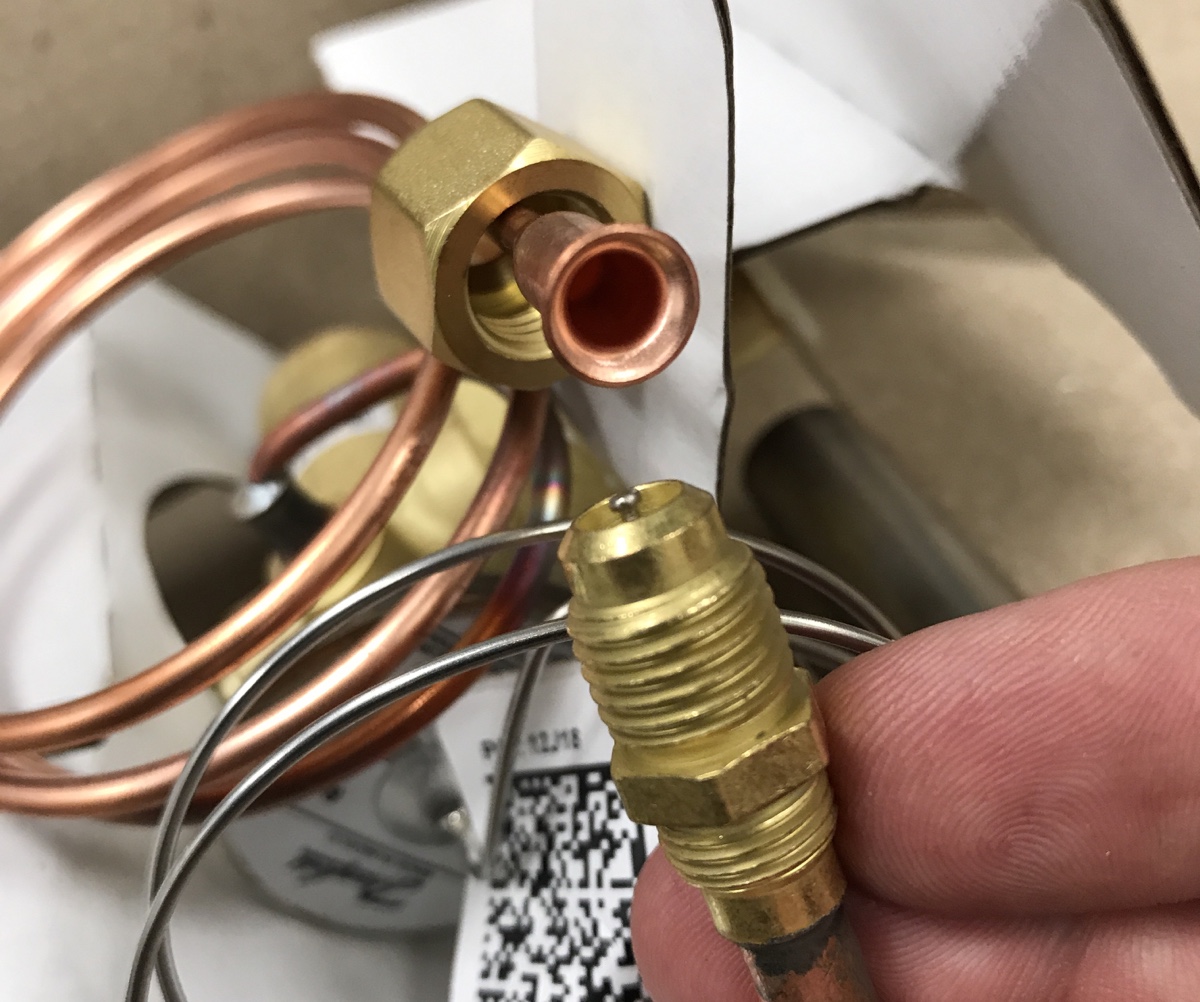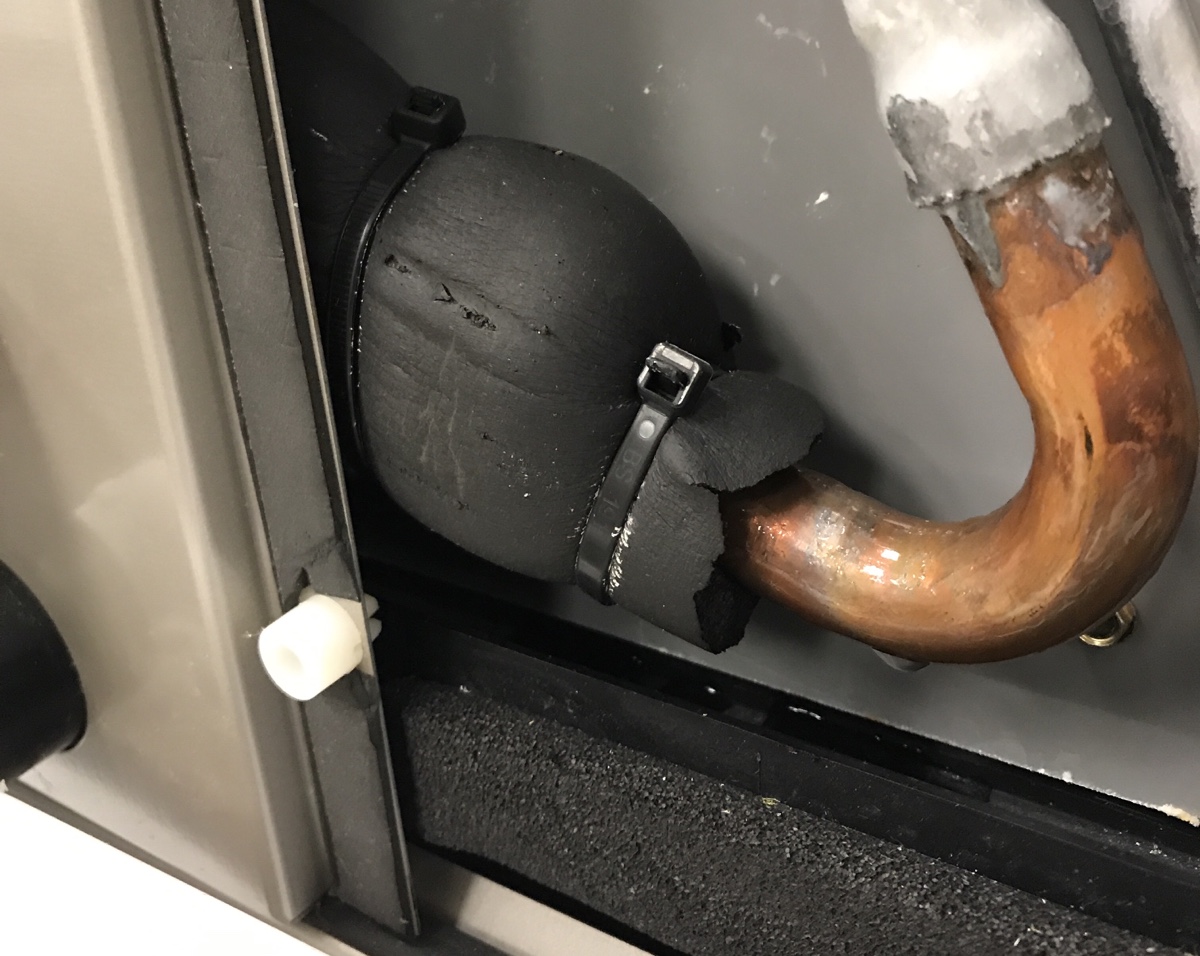Get Tech Tips
Subscribe to free tech tips.
Two Less Common TXV Issues to Watch For

The most common diagnosis with expansion valves is failed closed or restricted, resulting in underfeeding of the evaporator. The symptoms are low suction, normal subcooling, and high superheat when a TXV fails “shut,” but there are some other issues to watch for that can actually result in overfeeding the coil.
Schrader in the Port
The external equalizer tube on a TXV connects to the suction line at the evaporator outlet and provides a closing force to the valve. Many valves use a 1/4″ flare fitting to make the suction line connection. The only issue is that sometimes the 1/4″ port on the suction line will have a Schrader core in it, and the equalizer tube has no core depressor.
Without the closing force, the valve would tend to stay too far open, and the superheat will be too low (flooded) but NOT ALWAYS.
Because there is no flow through the Schrader and there is potential for a little leakage through the valve and into the equalizer, it can actually store some pressure that leaks in during the off cycle and cause the valve to stay shut once the equipment starts running. Because this is a weird one that can go either way, just keep your eyes peeled for it when there are 1/4″ ports at the evaporator.
The fix is simple: just pump down or recover the charge and remove the Schrader.

Bulb Insulation
Much is made of bulb placement when installing TXVs, and while it certainly can matter how you position the bulb, especially in larger systems. It is much more important to ensure that the bulb is tightly strapped to the suction line and insulated. The bulb is designed to measure the temperature of the suction line alone. When it is uninsulated, the valve will generally run a lower superheat. This isn't usually a big deal if the evaporator superheat is in the proper range of 6-14 degrees, but sometimes, you will find it lower.
I am aware that some manufacturers don't insulate the TXV bulb, and in most cases, it will be fine.
However…
Just recently, I was working on a new system that was running a consistent low superheat of 3-4 degrees. I insulated the bulb, and the superheat stabilized at 6-7 degrees. Not a big deal, but I felt a lot more comfortable afterward.
—Bryan











Comments
To leave a comment, you need to log in.
Log In